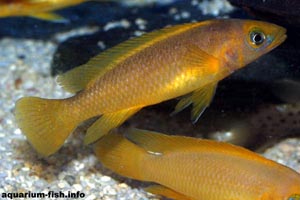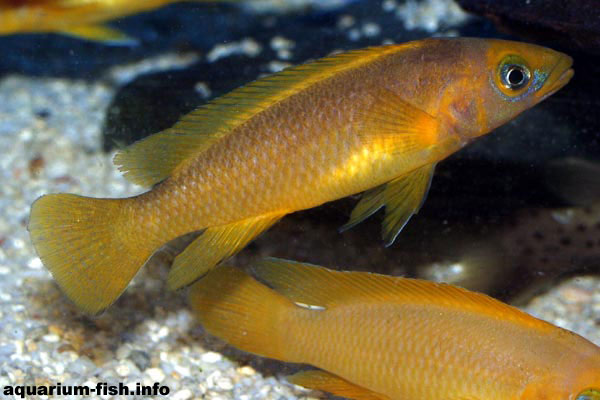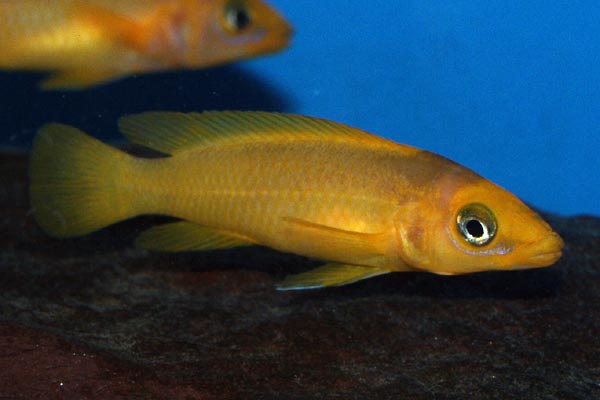

Species Profile | Images | Breeding Report | Similar Species

(Other members of the genus Neolamprologus)
ADULT SIZE: 10 cm
WATER CONDITIONS: Moderately hard and alkaline
TEMPERATURE RANGE: 25-28 C
FOOD: Feed Neolamprologus leleupi small live-foods and fine grade dried foods
DISTRIBUTION: This species comes from Lake Tanganyika
AQUARIUM CARE: This smallish Tanganyikan cichlid likes a rocky tank, with plenty of places to hide, as is typical of its natural habitat. Although the fish pictured is brilliant yellow, silvery and browny strains also exist. A good varied diet is essential to keep this species looking its best
BREEDING: Another father/mother family cave brooder. The fry should initially be fed with newly hatched artemia nauplii.
Have you bred Neolamprologus leleupi? Why not fill in a breeding questionaire?, or examine existing Neolamprologus leleupi breeding reports
Other members of the genus Neolamprologus
Other cichlid species
Other species from Lake Tanganyika

The brilliantly coloured Lemon cichlid, Neolamprologus leleupi from Lake Tanganyika

A good varied diet is essential to keep this fish lookig its best
BREEDING: Another father/mother family cave brooder. The fry should initially be fed with newly hatched artemia nauplii.
Have you bred Neolamprologus leleupi? Why not fill in a breeding questionaire?
This page summarises breeding reports provided by visitors to this site, along with some statistical analysis. Please feel free to contribute - whatever your experience!
| |||||||||
|
| ||||||||
| |||||||||
|
| ||||||||
|
| ||||||||
Remember, each record represents only one persons experience; if you had different results, or used different methods, please share your experiences
| Water conditions: Moderately hard and alkaline | Water temperature: |
| Disposition: Somewhat aggresive on occasions | Community tank?: Yes, a good community fish |
| Spawning Method: Long term (fry appear with adults) | Breeding problems: Poor fry survival rate |
| Sex ratio: Roughly equal | Breeding difficulty: Difficult |
| Sucess: Fairly sucessful | Years Experience: 1 |
| Other Comments: | |
| Date this record created: 9th May 2011 | Breeding date: 2011 |
| Breeder: | Location: |